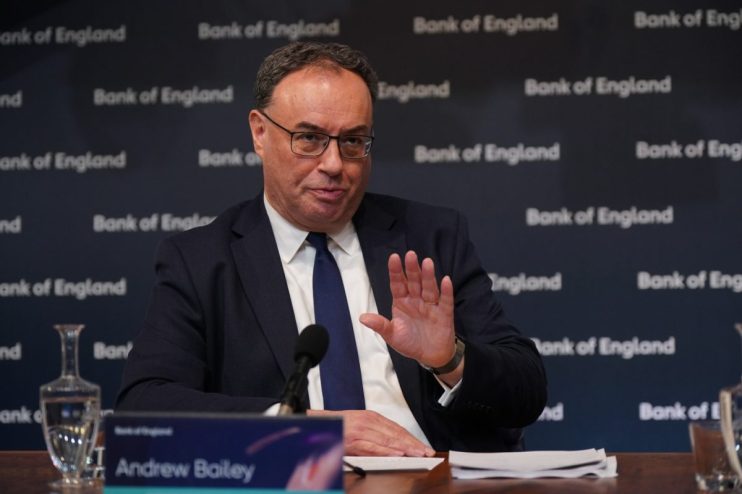Surprise inflation fall casts doubt on Bank of England’s interest rate path

This morning’s inflation figures has buoyed the market view that the Bank of England will start cutting rates in the first half of next year, much earlier than it is currently signalling.
According to new figures, the headline rate of inflation fell to 3.9 per cent, its lowest level in two years.
This was down from 4.6 per cent the month before and comfortably below the 4.3 per cent predicted by City experts.
Economists pointed out that the sharp fall in inflation was broad-based with prices falling 0.2 per cent compared to last month.
“Domestic inflationary pressures (are) collapsing,” Ashley Webb, UK economist at Capital Economics, commented.
With such an unexpected fall in inflation, market attention will turn to the Bank of England’s response.
Until now the Bank of England has been unwilling to discuss when it might cut interest rates. After last week’s MPC meeting Andrew Bailey said it was “really too early” to be talking about rate cuts.
But experts said this position is increasingly untenable.
“The Bank of England has been talking tough, but price rises appear on a rapid decline back towards the Bank’s target range and it may soon be that the risk for rate-setters is not under-tightening but over-tightening,” Ed Monk, associate director at Fidelity International, said.
Finalto’s Neil Wilson agreed: “This clearly raises the prospect of the Bank being a position to ease policy in the first half of the year, rather than later.”
Today’s figures demonstrate that there has been meaningful progress on a number of the factors identified by the Bank in its most recent round of forecasts, made in November.
In those forecasts, it predicted inflation would only have fallen to 4.6 per cent by this point. Services inflation, a key gauge of domestic inflationary pressures, was expected to be stuck at just below seven per cent.
As it is, the headline rate of inflation has fallen below four per cent while services inflation eased for the second month in a row to hit 6.3 per cent.
Samuel Tombs, chief UK economist at Pantheon Macroeconomics suggested that “the combination of falling energy costs, increasing labour market slack and subdued demand will ensure that the run rate of services price rises continues to slow.”
The Bank’s November forecasts form the basis for its refusal to countenance rate cuts just yet.
Alongside slowing wage growth, which eased to 7.3 per cent in the three months to October, the data suggests the Bank’s position is coming under pressure.
Markets are already leaping to conclusions. Traders are now pricing in five interest rates cuts by the end of next year, which would leave the Bank Rate below four per cent by the end of 2024.
The Bank may be loath to admit it, but the next move for interest rates is down.